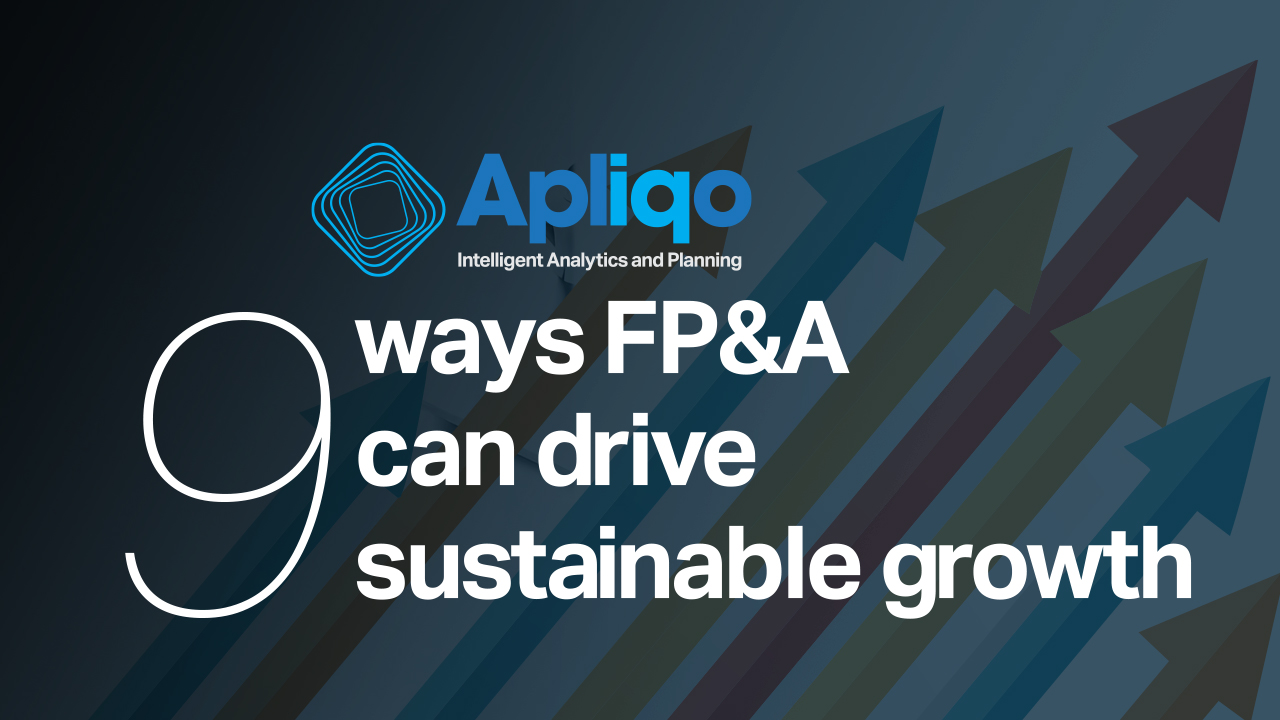Financial planning and analysis (FP&A) software has become an essential tool for modern businesses, offering robust capabilities to forecast, budget, and analyse financial performance. However, many organisations struggle to fully leverage these sophisticated systems, often underutilising key features or adapting their processes to fit the software rather than customising the software to fit their unique needs.
In this article, we will explore practical ways to customise your FP&A software to align with your organisation’s goals and complexities, ensuring you extract maximum value and drive strategic growth.
Understand your business needs first
Before diving into customisation, it’s crucial to have a clear understanding of your organisation’s specific needs and pain points. FP&A software, such as what Apliqo provides, offers a wide range of features, but without a strategic approach, it can be easy to get lost in the complexity.
Start by asking yourself some key questions:
- What are the most critical financial metrics for our business?
- Where do current processes create bottlenecks or inefficiencies?
- How do we currently collect and analyse financial data?
- What reporting and forecasting capabilities are essential to our stakeholders
Having a clear picture of these elements will allow you to tailor the software to support strategic decision-making effectively. It will also encourage the sort of introspection that can lead to structural business changes that need to be made before the technology even gets involved.
Leverage modular design for flexibility
Many advanced FP&A solutions, particularly Apliqo, are designed with modular components that allow businesses to implement the features they need without overcomplicating their systems.
By adopting a modular approach, you can:
- Implement core functionalities first, such as budgeting and forecasting, before expanding into more advanced capabilities like scenario planning and rolling forecasts.
- Integrate only the modules that align with your strategic goals, avoiding unnecessary complexity
- Easily scale and adapt the software as your organisation grows and evolves.
This flexibility ensures that your FP&A system remains agile and relevant to your evolving business environment – and doesn’t fall into the trap of adding tons and tons of features that your users won’t actually use.
Customise your dashboards and reporting
Effective decision-making hinges on having the right data presented in the right way. Customising dashboards and reports to align with your organisation’s KPIs and performance indicators can significantly enhance usability and insights because they will be tightly connected to your overall strategic objectives.
Consider the following when customising your FP&A dashboards:
- Tailor your visualisations to highlight the most relevant financial trends and the ones that talk to your key metrics.
- Create role-based dashboards to ensure each department has access to the data they need.
- Automate regular report generation to save time and reduce manual errors.
With Apliqo UX’s intuitive interface and robust reporting capabilities, you can create custom views that provide actionable insights without overwhelming users with unnecessary data. This goes a long way to increasing the speed and quality of decision-making, especially in the midst of complexity.
Automate data integration
Another common challenge that organisations face is integrating data from multiple sources. Customising your FP&A software to automate data imports from ERP systems, CRM platforms, and other financial tools can help to eliminate manual entry errors and improve data accuracy.
To optimise data integration:
- Establish automated data pipelines to ensure real-time updates.
- Use built-in connectors or APIs to link various systems seamlessly.
- Standardise data formats to ensure consistency across reports.
This will become increasingly important as we enter the world of AI-agents which can take steps on your behalf and perform more complex data transformations that are currently possible with API integrations. Therefore, the more automation you start to experiment with now, the more capable you will be to leverage the full power of the agentic behaviour that is to come. Watch this space.
Implement scenario planning features
Every organisation faces uncertainty, and having the ability to model different financial scenarios is crucial for strategic planning. Customising your FP&A software to include scenario planning features allows you to explore various “what-if” situations and prepare for potential challenges or opportunities.
When setting up scenario planning:
- Define key variables that impact your business, such as revenue fluctuations or market changes.
- Use historical data to create realistic projections.
- Compare multiple scenarios side by side to make informed decisions.
Apliqo’s scenario-planning capabilities enable businesses to stay agile and proactive in a dynamic environment. You can build a wide variety of these forecasts and that allows for a myriad of different strategies and plans to be explored.
Enhance collaboration through thoughtfully configured user permissions
FP&A processes often involve multiple stakeholders, from finance teams to department heads and executives. Customising user permissions ensures that each stakeholder has the right level of access to data, improving collaboration without compromising security.
Best practices for user permissions include:
- Assigning role-based access to ensure users see only relevant data.
- Implementing approval workflows to streamline budget submissions.
- Tracking changes through audit logs to maintain accountability.
Making the most of role-based access features allows organisations to strike the right balance between transparency and control – at the same time improving the speed and quality of the collaboration itself.
Align the software with your strategic objectives
We’ve alluded to this above, but it’s worth reiterating here. One of the biggest mistakes organisations make is treating FP&A software as a standalone tool rather than a strategic enabler. Customising your software to align with your broader strategic objectives ensures that financial planning becomes an integral part of decision-making.
Here are some steps to improve alignment:
- Define clear objectives for financial planning and link them to corporate goals.
- Use the software to track progress against strategic initiatives.
- Regularly review and adjust configurations to stay aligned with evolving priorities.
This is a crucial step to ensure that your FP&A processes drive meaningful results.
Provide adequate training and support
Even the most well-customised FP&A software can fall short if users are not adequately trained. Providing comprehensive training and ongoing support ensures that your team can fully leverage the software’s capabilities.
Key elements of effective training include:
- Tailored training sessions for different user roles.
- Access to on-demand learning resources and tutorials.
- Ongoing support to address evolving needs and challenges.
From our experience, it’s often helpful to work closely with your technology provider on this because they can offer experience and expertise captured from their own client base – helping to accelerate the learning process and overcome common challenges that have been faced before. This is why Apliqo offers a range of support services to help our clients get the most out of the software.
Conclusion
Customising your FP&A software to fit your business needs is essential for unlocking its full potential and driving strategic growth. By understanding your requirements, leveraging modular flexibility, and aligning the system with your strategic objectives, you can transform financial planning into a powerful tool for decision-making.
With Apliqo‘s extensive customisation options and seamless integration with IBM Planning Analytics (TM1), businesses can create an FP&A system that fits their unique complexities and workflows, ultimately improving financial outcomes and supporting long-term success.







